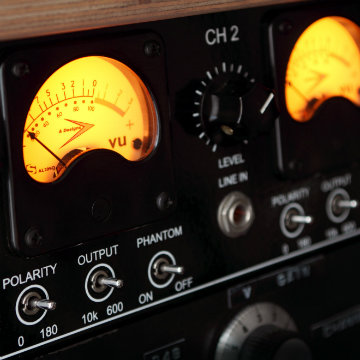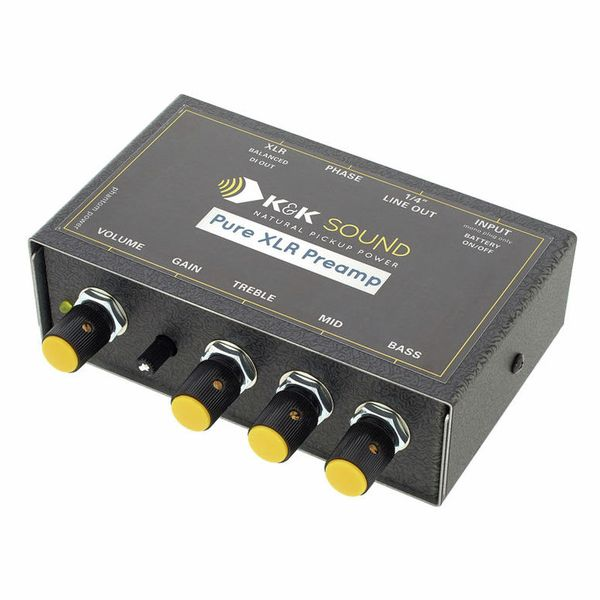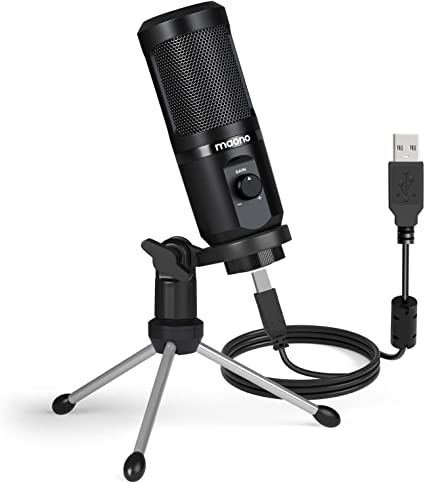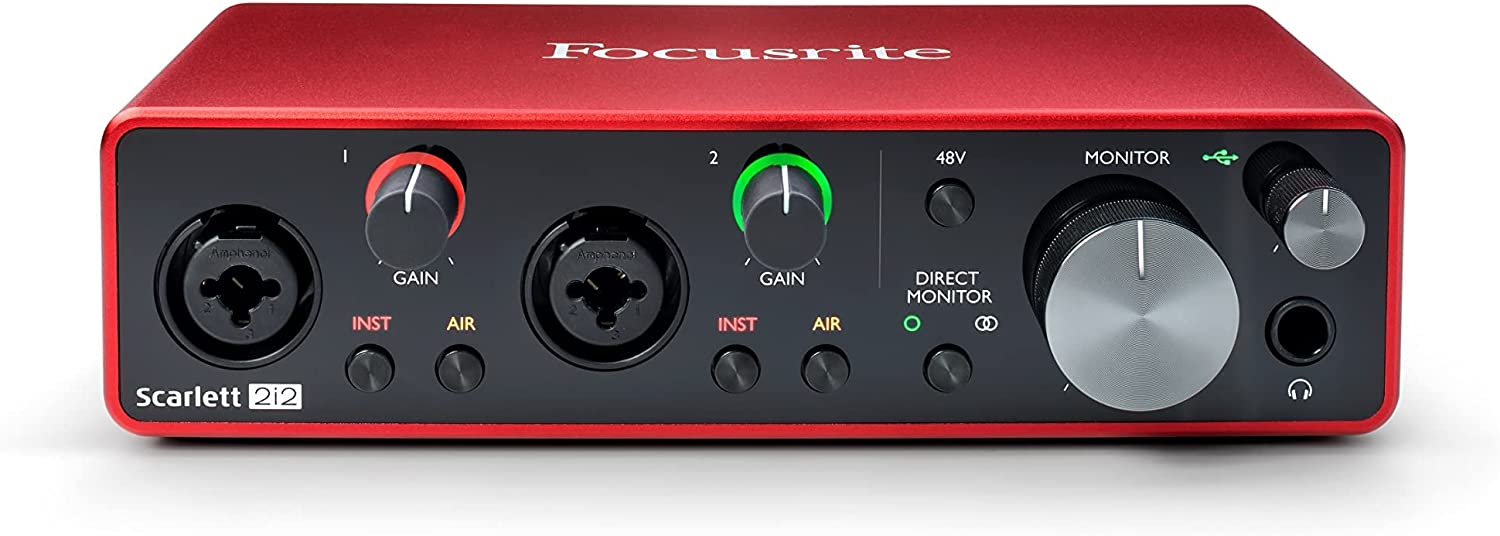
When it comes to recording, there’s much to take in. You need to learn a lot of new terminologies, how different pieces of equipment work together, how components interact, the types of sound you can create, and how to edit in software… there’s a lot to take on board.
One of the most important elements in any recording set-up is the preamp. This is a vital piece of equipment, and choosing the right preamp can make all the difference when it comes to your recording set-up.
It could be that you want to find the best mic preamps for capturing perfect vocals. Or maybe you want to buy the best tube preamps for capturing a classic sound. Whatever it is you want to do, you need to select the right preamp for recording so it’s important to learn about them.
At its most fundamental, a preamp is a device that takes an electrical signal and amplifies it before it reaches a speaker, pair of headphones, power amp, or audio interface. When sound is changed into an electrical signal by a mic or pickup it is a weak signal and far too low, so it needs to be increased.
The original signal can be generated from a musical instrument, a microphone, or even a turntable. The source of the signal doesn’t matter, only that it requires boosting.

A preamp takes the weak signal and increases the gain — that is to say, the amount of amplification — so that it can be used by other pieces of equipment such as headphones, speakers, or audio interfaces.
When a microphone or instrument such as an electric guitar generates sound, the level is very quiet. When this signal reaches the microphone or pickup, the sound is converted into a low-level electrical signal. It is this signal which is boosted by the preamp.
Modern preamps do this by passing the original signal through a signal path that consists of transistors. Older preamps will use vacuum tubes, or valves, to achieve the same effect. However, the process of signal amplification remains the same. A preamp will take the low-level signal from the original and increase it to what is known as a line-level signal.
A “line level signal” is a signal strength that is a standard for passing normal, analog sound to different parts of your equipment. There is no one fixed value for a line-level signal, but all preamps will generate a bare minimum.
The minimum line level is around -10dBV, which is fine for beginner and consumer-grade equipment. More professional setups will be better than this, perhaps around +4dBV.

A preamp takes an existing signal and increases it to be used with other equipment. What it will not do is make the original signal any better. The results you get from a preamp will be entirely dependent on the quality of the signal it receives. So, in order to get the best from your preamp, you’ll want to have the best quality signal, to begin with.
As with any piece of equipment, it may take a little practice to find the best balance between the original signal and the amplification done by the preamp. This takes a little judgment and skill but can make a big difference to your final sound.
A preamp is also not an amplifier or loudspeaker. Though guitar amplifiers will have a preamp built in, the preamp itself is not an amplifier. After the signal has been boosted by the preamp it will require boosting again by a power amp to drive the loudspeaker in an amplifier as part of a signal chain.

When it comes to design, there are two main types of preamp: integrated and standalone.
An integrated preamp will be combined with a microphone or musical instrument. For example, a USB microphone will have an integrated preamp as part of its design to ensure that the audio signal is loud enough so the microphone can be plugged directly into your computer without the need for further equipment such as an audio interface.
A standalone, or external, preamp is a single device — that is, its only function is to be a preamp. As a general rule, standalone preamps are likely to be of a higher quality than integrated preamps. They will be physically larger, but the benefit is that they will amplify the signal better and produce a purer sound. There will normally also be less hiss or hum amplified along with the original signal.
Standalone preamps offer a more flexible solution than integrated preamps, but this comes at a price — standalone preamps are likely to be noticeably more expensive.

The other distinction when it comes to preamps is tubes vs transitions. Both achieve the same result — amplification of the original electrical signal. However, the type of sound they make is different.
Modern preamps will use transistors to amplify the audio signal. Transistors are reliable and dependable and produce a “purer” signal.
Vacuum tubes are less dependable and bring some distortion into the amplified signal. However, it is exactly this distortion that makes them desirable. This distortion can make the amplified signal sound “warmer” or “brighter”. This is often referred to as a “classic” or “vintage” sound.
There’s no correct answer as to whether a tube or transistor preamp is better. Both have their unique characteristics, and preferences will vary depending on what they are going to be used for and personal taste.
The other way to categorize preamps is by what they will be used for.
A dedicated preamp for instruments will prioritize amplifying the parts of the signal to which your instrument will respond. Often they will be one in a chain of different preamps and effects, which in guitar amps will include a power amp to boost the signal further.
A microphone preamp will not only amplify the signal from your microphone, but if you are using a condenser mic it will provide phantom power. Condenser microphones require this additional power because otherwise, the signal is too low for the condenser microphones to function. Audio interfaces will normally provide phantom power.
Record players and some other audio equipment also require a preamp. Many turntables have integrated preamps, but you can buy standalone preamps for them as well. They will provide better quality and a higher signal gain.
An audio interface with a built-in preamp will often support both instruments and microphones. Microphones use an XLR connection and instruments will use a TRS jack.

There are several things to pay attention to when deciding what preamp to buy.
Some preamps will have just one or two line inputs, which may be suitable for podcasting or for recording a single instrument at a time. Others will have multiple line inputs so you can capture several hosts or a whole band playing at once. Choose a preamp with the number of inputs you require for your purpose. But bear in mind you may want to add additional microphones or instruments at a later stage, so be sure to consider what your future requirements may be as well as your current ones.
As mentioned above, tube preamps and transistor preamps have different sound characteristics. In a more technical sense, transistors will produce a cleaner, less colored signal, which is then perfect for processing further in a DAW (digital audio workstation).
A tube preamp will provide a more distorted and therefore less clean signal, but with the characteristic warmth and color that provides the sound quality aficionados love. The vast majority of preamps are likely to be transistor-based — tube preamps tend to be for a more specialized market.
Since it is the job of preamps to increase the signal gain, how much gain they can add to your signal matters. Normal condenser mics will need around 30-50dB gain. Low-output dynamic microphones, or ribbon microphones, may require more, typically between 50-70dB. Ensure your preamp is capable of delivering the gain you require for your equipment.
Some standalone preamps will have built-in processing, especially if they are integrated into an audio interface. These can be effects such as compressors, EQing, DeEssers, reverb, and many, many others. Choose a preamp with the features you require.
The more expensive a preamp is, the more likely it is to have additional features. But if you’re only using a single condenser microphone to record a podcast then you’re not going to need all the additional functionality.
Speaking of expense, there is of course the cost of the preamp. Transistor preamps are likely cheaper than tube preamps, but preamps of all types can range from very inexpensive to thousands of dollars. Choosing the right one isn’t just a question of use — it’s a question of how much you can afford too!
The market for preamps is large, and making the correct choice is not always an easy one. From the cheapest and easiest transistor preamps up to the most expensive vintage tube preamps prized by specialists, there are almost as many preamps are there are people wanting to use them. And sound quality can vary greatly between them.
What is certain is that they are a vital piece of equipment in any recording set-up, so it is worth spending a good amount of time to ensure that you make the right choice.
And by making the right choice, you will have incredible sounding records in no time at all.